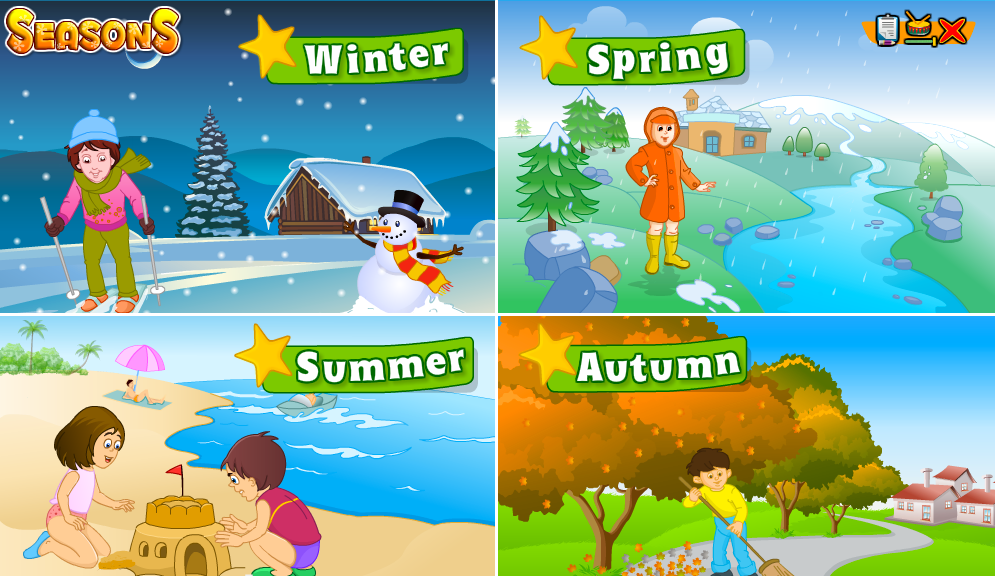Tag games are a staple of childhood fun, evoking memories of laughter, running, and that thrilling moment of trying not to get caught. From schoolyards to parks, tag games are a universal play activity that transcends cultural boundaries. Let’s dive into some of the most popular tag games played worldwide, each with its unique twist and charm.
Classic Tag Games
Freeze Tag
Freeze Tag is a timeless classic that many of us grew up playing. The rules are simple: one player is “It” and must tag others. A player must “freeze” in place after being tagged. They can only be unfrozen if another player tags them. This game is perfect for large groups and can be played almost anywhere, making it a popular choice in schools and playgrounds.
Hide and Seek Tag
Hide and Seek Tag combines the elements of traditional tag and hide-and-seek. The game starts with one player counting while the others hide. Once the counting is done, the seeker must find and tag the hidden players. This game is loved worldwide for its mix of suspense and excitement, with variations found in different cultures.

Innovative Tag Games
Zombie Tag
Zombie Tag adds a fun and spooky twist to the traditional game. One player starts as the “Zombie” and must tag others, who then become zombies themselves. The game continues until everyone is a zombie. This game is viral during Halloween and at themed parties due to its imaginative gameplay.
Blob Tag
In Blob Tag, the ” It ” person forms a “blob” by holding hands with those they tag. The blob grows larger with each tagged player, making it more challenging to evade capture. This game is great for teamwork and coordination, as players must strategize to avoid the ever-growing blob.
Regional Tag Games
Kabaddi (South Asia)
Kabaddi is a highly strategic and physically demanding tag game originating from South Asia. It involves two teams, with players taking turns to raid the opponent’s side and tag as many defenders as possible before returning to their side. The catch? The raider must hold their breath and chant “Kabaddi” throughout the raid. This game is not only a popular sport but also a part of cultural heritage in countries like India, Bangladesh, and Pakistan.
Chain Tag (China)
Chain Tag, known as “Ji Long Pao” in China, is a game where players form a line by holding onto each other’s waists. The goal is for the “head” of the chain to tag other players without breaking the chain. This game has historical significance and is often played during festivals and celebrations, emphasizing unity and cooperation.
Seasonal and Themed Tag Games
Sardines
Sardines is a reverse hide-and-seek game where one person hides and everyone else seeks. When a seeker finds the hidden person, they join them in their hiding spot. The game goes on until all the players are crammed into one area, much like sardines. This game is particularly fun indoors and during sleepovers, offering a cozy twist to traditional tag.
Capture the Flag
Capture the Flag is a team-based game where players must capture the opposing team’s flag and bring it back to their base without being tagged. This game requires strategy, speed, and teamwork, making it a favorite at summer camps and outdoor gatherings. Its enduring popularity is due to the thrill of sneaking into enemy territory and the excitement of defending your own.

Technology-Enhanced Tag Games
Laser Tag
Laser Tag takes tag games into the digital age with high-tech equipment and immersive gameplay. Players wear vests with sensors and use laser guns to tag each other. This game is often played in specially designed arenas with obstacles and special effects, offering a futuristic and adrenaline-pumping experience.
Geocaching Tag
Geocaching Tag combines the adventure of treasure hunting with the excitement of tag. Using GPS devices, players search for hidden caches in various locations. Once found, they tag the cache and move on to the next one. This game encourages exploration and combines physical activity with technology, making it unique and engaging.
Educational and Developmental Benefits
Tag games are more than just fun—they offer numerous benefits. Physically, they promote cardiovascular health, agility, and coordination. Socially, they encourage teamwork, communication, and conflict resolution. Cognitively, they help develop strategic thinking and problem-solving skills. These games are a holistic way to support children’s development in a playful environment.
Tag Games in Different Cultures
Tag games reflect the values and traditions of the cultures they come from. In Japan, “Onigokko” is a popular tag game where the “Oni” (demon) chases the players. In Brazil, “Pega-Pega” is a common childhood game similar to tag. These variations show how universal the concept of tag is, yet each version carries a unique cultural flavor.
Safety Tips for Playing Tag Games
While tag games are generally safe, it’s important to follow some safety tips:
- Make sure there are no dangers or impediments in the play area.
- Supervise younger children to prevent accidents.
- Encourage players to wear appropriate footwear.
- Set clear boundaries to keep the game area manageable.
Adapting Tag Games for All Ages
Tag games can be modified to suit different age groups. For younger children, simplify the rules and ensure a safe environment. Teenagers might enjoy more complex games like Capture the Flag or Laser Tag. Even adults can join in the fun with games like Geocaching Tag, which combines physical activity with adventure.
Organizing Tag Game Events
Tag games are perfect for school or community events. To organize a successful event:
- Choose a suitable location with ample space.
- Plan a variety of tag games to keep everyone engaged.
- Ensure there are enough supervisors to maintain safety.
- Consider themed events, like a Zombie Tag night or a Capture the Flag tournament.
Tag Games in the Digital Age
With the advent of mobile and video games, digital adaptations of tags have emerged. Apps and online games offer virtual versions of tag, blending traditional gameplay with modern technology. While these can be fun and convenient, it’s important to balance screen time with physical activity.
Promoting Tag Games in Schools
Tag games are a valuable addition to school curricula. They provide a break from academics, promote physical health, and help develop social skills. Schools can incorporate tag games into physical education classes or recess activities to ensure students benefit from regular, active play.

Tag Games and Mental Health
Playing tag games is not only good for physical health but also beneficial for mental well-being. They provide a break from stress, encourage laughter, and promote social interaction. Engaging in playful activities like tag can boost mood, reduce anxiety, and enhance overall mental health.
What is a Japanese tag game?
The Japanese tag game is called “Onigokko.” In this game, one player is designated as the “Oni,” or demon, and their goal is to catch the other players by tagging them. The players try to avoid being tagged by the Oni by running away or dodging. Once a player is tagged by the Oni, they usually become the new Oni, and the game continues with the roles reversed.
Onigokko is a popular game among children in Japan and is often played in schoolyards, parks, and playgrounds. It emphasizes speed, agility, and quick thinking, making it a fun and engaging activity for kids. The game’s simplicity and the thrill of evading capture make it a timeless favorite in Japanese culture.
What is the game of tag for?
The game of tag is for fun, exercise, and social interaction. It’s a simple and enjoyable activity where one player, designated as “It,” chases and tries to tag other players, who then try to avoid being caught. Here’s a breakdown of what the game of tag is for:
- Physical Exercise: Tag involves running, dodging, and sometimes jumping, which provides a good cardiovascular workout. It helps improve agility, speed, and overall physical fitness.
- Social Interaction: Tag is a social game that encourages players to interact with each other. It promotes teamwork, communication, and social bonding, especially when played in groups.
- Coordination and Motor Skills: The game helps develop coordination and motor skills as players need to move quickly and change direction frequently to avoid being tagged.
- Strategy and Quick Thinking: Players need to be strategic and quick-thinking to avoid being tagged and to tag others effectively. This helps in developing cognitive skills such as planning and decision-making.
- Stress Relief and Fun: Tag is an enjoyable and exhilarating game that can help reduce stress and provide a sense of joy and freedom. It’s a great way for children (and adults) to let off steam and have fun.
- Inclusivity and Accessibility: Tag can be played by people of all ages and skill levels. It requires no special equipment or setup, making it accessible and easy to play in various environments.
What are the basic rules of a tag game?
The basic rules of a tag game are simple and can be easily adapted for different variations. Here are the fundamental rules:
- Players: A group of players participates, with one player designated as “It.”
- Objective: The player who is “It” must chase and tag the other players by touching them.
- Tagging: To tag another player, the “It” player must physically touch them, usually with their hand.
- Boundaries: The game should be played within a defined area to keep it manageable and safe. Players must stay within these boundaries.
- Avoiding Tag: The other players try to avoid being tagged by running, dodging, or hiding within the designated play area.
- Becoming “It”: When a player is tagged, they usually become the new “It.” The previous “It” player joins the others in trying to avoid being tagged.
- No Tag-Backs: A common rule is that the player who just became “It” cannot immediately tag the player who tagged them. This prevents the game from going back and forth between two players.
- Safe Zones: In some variations, there may be designated safe zones where players cannot be tagged. These zones are usually temporary and encourage strategic play.
- Game Duration: The game can continue for a set period, until everyone is tagged, or until players decide to stop. It can also be played in rounds.
- Fair Play: All players should play fairly, respecting the rules and each other. Physical pushing or rough play is generally not allowed.
FAQs
What is the oldest tag game known?
The oldest tag game is likely “Kabaddi,” originating in South Asia over 4,000 years ago.
Can tag games be played indoors?
Yes, many tag games like Sardines and Freeze Tag can be adapted for indoor play.
How can tag games be made inclusive for all abilities?
Modifying rules, providing necessary support, and choosing accessible play areas can make tag games inclusive.
What are some tag games suitable for large groups?
Capture the Flag, Zombie Tag, and Blob Tag are great for large groups due to their team-based or expansive nature.
Are there professional tag game leagues?
Yes, there are organized leagues and competitions for games like Laser Tag and Kabaddi, showcasing the competitive side of tag games.
Conclusion
Tag games are a delightful and essential part of childhood that offers physical, social, and cognitive benefits. From traditional games like Freeze Tag and Hide and Seek Tag to modern innovations like Laser Tag and Geocaching Tag, these games continue to bring joy and excitement to people of all ages around the world. So, gather some friends, pick a game, and let the fun begin!
Read more:













+ There are no comments
Add yours